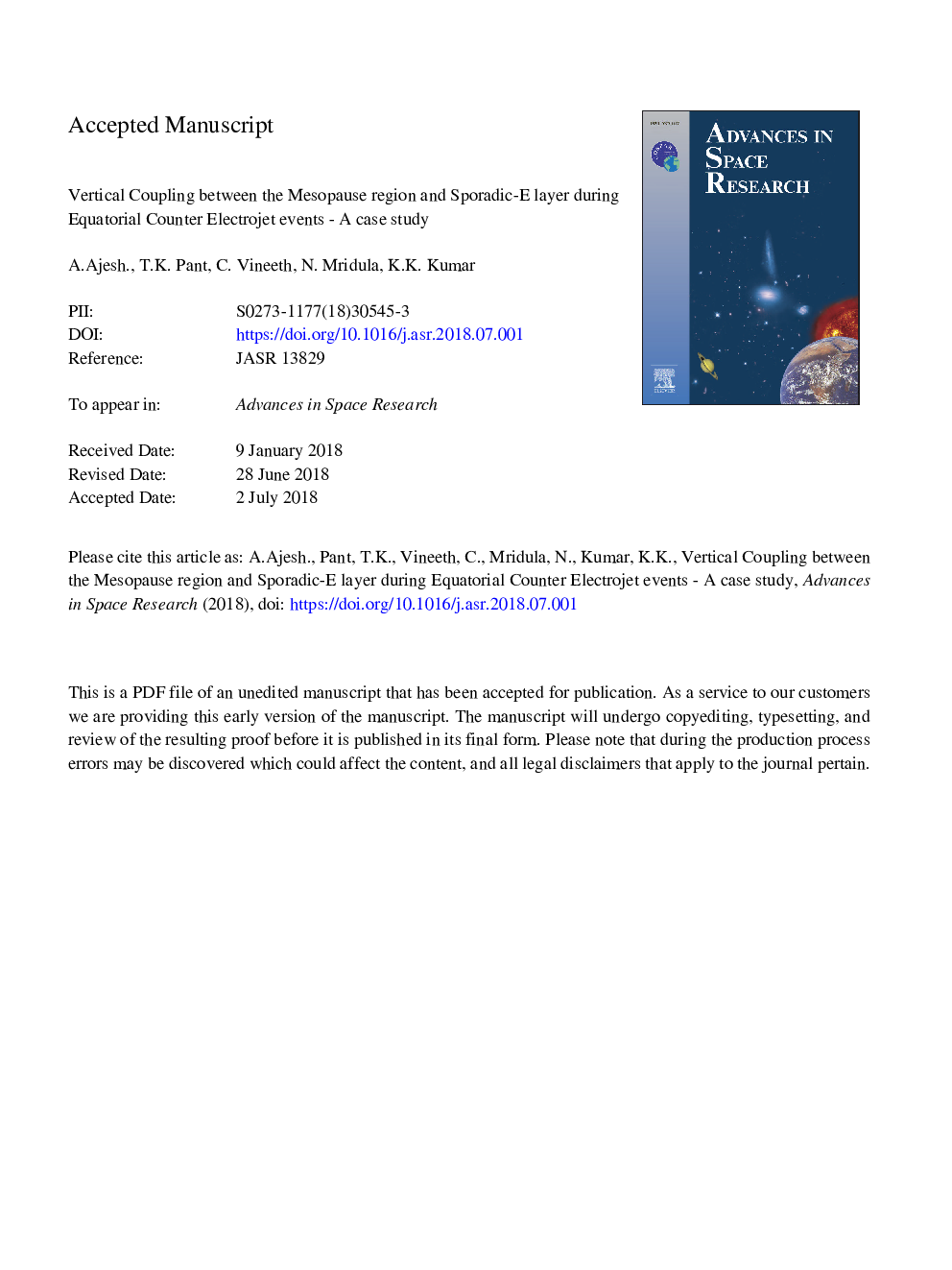| Article ID | Journal | Published Year | Pages | File Type |
|---|---|---|---|---|
| 8948927 | Advances in Space Research | 2018 | 32 Pages |
Abstract
This paper presents a case study exploring the variability of daytime ionospheric sporadic E (Es) during Counter Equatorial Electrojet (CEJ) events over Trivandrum (8.5°N, 77°E, 0.5°N dip lat.), a dip equatorial station in India. It makes use of collocated measurements of (a) daytime mesopause temperature estimated using a Multiwavelength Dayglow Photometer, (b) base height of sporadic E-layer i.e. Esq obtained from a Digital Ionosonde, (c) Equatorial Electrojet (EEJ) induced magnetic field at the surface measured using a Proton Precession Magnetometer and (d) neutral meridional and zonal winds measured using meteor wind radar. The study addresses why, only on certain CEJ days, the Es layer turns into a blanketing Es layer, also referred to as Esb layer, appearing for a brief period and almost simultaneously as the CEJ induced magnetic field on the surface is either zero or very small, and not on all the CEJ days despite the reversal of the zonal winds in the dynamo region (â¼98â¯km). Further, a simulation using the simultaneously measured zonal wind and temperature shows that during CEJ, especially when the zonal wind reverses and the mesopause temperature lowers, the conditions are in fact less favourable for the ionization to converge resulting in Esb. On the other hand, on such occasions, the meridional wind exhibits a tendency to turn equatorward with time with the changeover gradually happening as the altitude decreases. These observations have been discussed to allude to the possible role of the overall wind system and its spatio-temporal changes in the ionospheric altitudes which could influence the gradual transition of Esq to Esb over the dip equator.
Related Topics
Physical Sciences and Engineering
Earth and Planetary Sciences
Space and Planetary Science
Authors
A. Ajesh, T.K. Pant, C. Vineeth, N. Mridula, K.K. Kumar,
